Items
This page has a complete list of all the documents and recordings in The Qwertyverse, from scanned historical documents to recordings of oral histories. To search the full archive of items, which includes additional items such as map locations, click on the link for "Search and Browse All" at the bottom of the page.
Items in The Qwertyverse Collection
-
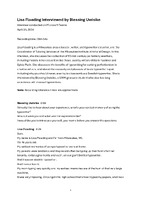 Lisa Floading Interview by Blessing Uwisike (Transcript) Lisa Floading is a Milwaukee-area educator, writer, and typewriter collector, and the Coordinator of Tutoring Services at the Milwaukee Institute of Art and Design. In this interview, she discusses her collection of 63 mid-century portable typewriters, including models in her collection like those used by writers William Faulkner and Sylvia Plath. She discusses the benefits of typewriting for curbing perfectionism in creative writers, and about the necessity and pleasure of basic typewriter repair, including why you should never, ever try to disassemble a Swedish typewriter. She is interviewed by Blessing Uwisike, a UWM graduate student who also has long experience with manual typewriters.
Lisa Floading Interview by Blessing Uwisike (Transcript) Lisa Floading is a Milwaukee-area educator, writer, and typewriter collector, and the Coordinator of Tutoring Services at the Milwaukee Institute of Art and Design. In this interview, she discusses her collection of 63 mid-century portable typewriters, including models in her collection like those used by writers William Faulkner and Sylvia Plath. She discusses the benefits of typewriting for curbing perfectionism in creative writers, and about the necessity and pleasure of basic typewriter repair, including why you should never, ever try to disassemble a Swedish typewriter. She is interviewed by Blessing Uwisike, a UWM graduate student who also has long experience with manual typewriters. -
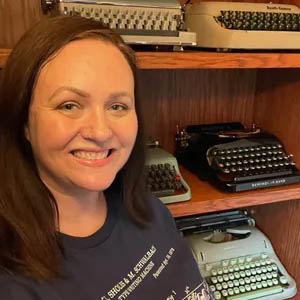 Lisa Floading Interviewed by Blessing Uwisike Lisa Floading is a Milwaukee-area educator, writer, and typewriter collector, and the Coordinator of Tutoring Services at the Milwaukee Institute of Art and Design. In this interview, she discusses her collection of 63 mid-century portable typewriters, including models in her collection like those used by writers William Faulkner and Sylvia Plath. She discusses the benefits of typewriting for curbing perfectionism in creative writers, and about the necessity and pleasure of basic typewriter repair, including why you should never, ever try to disassemble a Swedish typewriter. She is interviewed by Blessing Uwisike, a UWM graduate student who also has long experience with manual typewriters.
Lisa Floading Interviewed by Blessing Uwisike Lisa Floading is a Milwaukee-area educator, writer, and typewriter collector, and the Coordinator of Tutoring Services at the Milwaukee Institute of Art and Design. In this interview, she discusses her collection of 63 mid-century portable typewriters, including models in her collection like those used by writers William Faulkner and Sylvia Plath. She discusses the benefits of typewriting for curbing perfectionism in creative writers, and about the necessity and pleasure of basic typewriter repair, including why you should never, ever try to disassemble a Swedish typewriter. She is interviewed by Blessing Uwisike, a UWM graduate student who also has long experience with manual typewriters. -
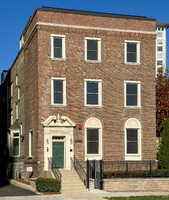 Sholes House, 1042 E. Juneau Ave. A contemporary photograph of Sholes House, located at 1042 E. Juneau Ave., in Milwaukee. Note the different colors of brick on the side of the building, which faces west. When Charles Palmer renovated or reconstructed the building in 1932, it was expanded toward the street. Before Sholes sold the property in 1868, the building would have been just two stories tall and significantly more modest in appearance. It contains three separate apartments today.
Sholes House, 1042 E. Juneau Ave. A contemporary photograph of Sholes House, located at 1042 E. Juneau Ave., in Milwaukee. Note the different colors of brick on the side of the building, which faces west. When Charles Palmer renovated or reconstructed the building in 1932, it was expanded toward the street. Before Sholes sold the property in 1868, the building would have been just two stories tall and significantly more modest in appearance. It contains three separate apartments today. -
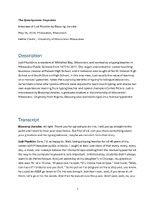 Judi Mucklin Interview by Blessing Uwisike (Transcript) Judi Mucklin is a resident of Whitefish Bay, Wisconsin, and worked as a typing teacher in Milwaukee Public Schools from 1972 to 2011. She began and ended her career teaching business classes at Pulaski High School, and in between also taught at North Division High School and South Division High School. In this interview, Judi recalls the value of learning on a manual typewriter, notes the surprising benefits of typing for bilingual education, remembers a time when police officers were required to learn touch typing, and shares her own experiences learning from typing teacher and speed champion Cortez Peters. Judi is interviewed by Blessing Uwisike, a graduate student at the University of Wisconsin–Milwaukee. Originally from Nigeria, Blessing also learned to type on a manual typewriter.
Judi Mucklin Interview by Blessing Uwisike (Transcript) Judi Mucklin is a resident of Whitefish Bay, Wisconsin, and worked as a typing teacher in Milwaukee Public Schools from 1972 to 2011. She began and ended her career teaching business classes at Pulaski High School, and in between also taught at North Division High School and South Division High School. In this interview, Judi recalls the value of learning on a manual typewriter, notes the surprising benefits of typing for bilingual education, remembers a time when police officers were required to learn touch typing, and shares her own experiences learning from typing teacher and speed champion Cortez Peters. Judi is interviewed by Blessing Uwisike, a graduate student at the University of Wisconsin–Milwaukee. Originally from Nigeria, Blessing also learned to type on a manual typewriter. -
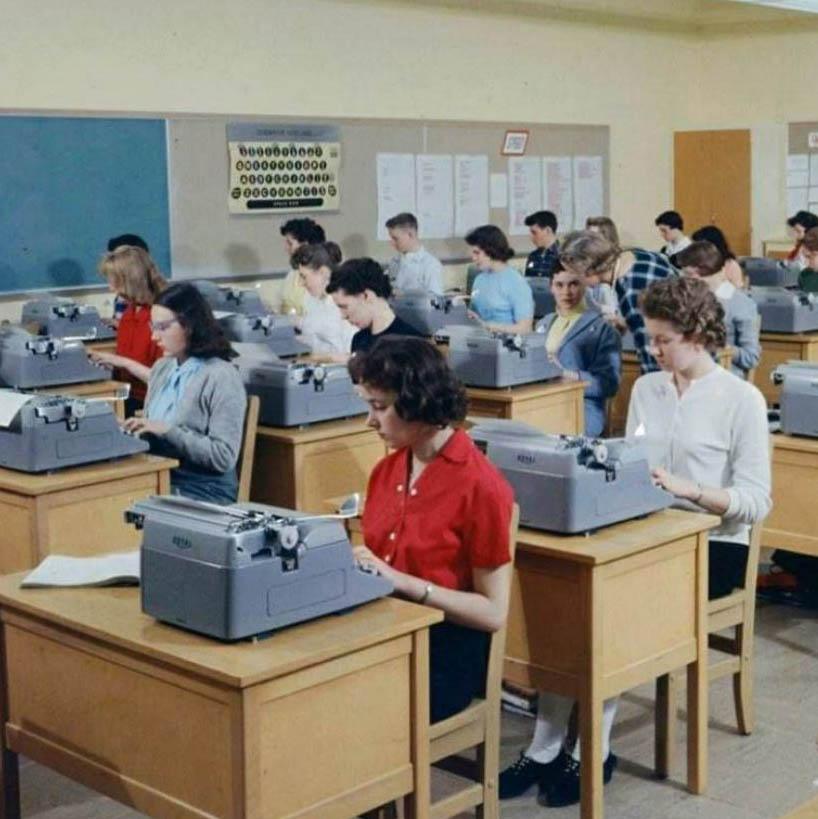 Judi Mucklin Interview by Blessing Uwisike Judi Mucklin is a resident of Whitefish Bay, Wisconsin, and worked as a typing teacher in Milwaukee Public Schools from 1972 to 2011. She began and ended her career teaching business classes at Pulaski High School, and in between also taught at North Division High School and South Division High School. In this interview, Judi recalls the value of learning on a manual typewriter, notes the surprising benefits of typing for bilingual education, remembers a time when police officers were required to learn touch typing, and shares her own experiences learning from typing teacher and speed champion Cortez Peters. Judi is interviewed by Blessing Uwisike, a graduate student at the University of Wisconsin–Milwaukee. Originally from Nigeria, Blessing also learned to type on a manual typewriter.
Judi Mucklin Interview by Blessing Uwisike Judi Mucklin is a resident of Whitefish Bay, Wisconsin, and worked as a typing teacher in Milwaukee Public Schools from 1972 to 2011. She began and ended her career teaching business classes at Pulaski High School, and in between also taught at North Division High School and South Division High School. In this interview, Judi recalls the value of learning on a manual typewriter, notes the surprising benefits of typing for bilingual education, remembers a time when police officers were required to learn touch typing, and shares her own experiences learning from typing teacher and speed champion Cortez Peters. Judi is interviewed by Blessing Uwisike, a graduate student at the University of Wisconsin–Milwaukee. Originally from Nigeria, Blessing also learned to type on a manual typewriter. -
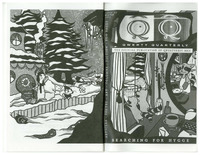 QWERTY Quarterly, Issue 3, Winter 2023 Issue 3 of QWERTY Quarterly, the official zine of QWERTYFest MKE.
QWERTY Quarterly, Issue 3, Winter 2023 Issue 3 of QWERTY Quarterly, the official zine of QWERTYFest MKE. -
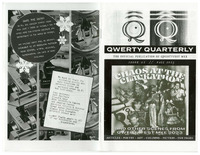 QWERTY Quarterly, Issue 2, Fall 2023 Issue 2 of QWERTY Quarterly, the official zine of QWERTYFest MKE.
QWERTY Quarterly, Issue 2, Fall 2023 Issue 2 of QWERTY Quarterly, the official zine of QWERTYFest MKE. -
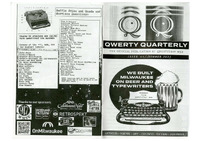 QWERTY Quarterly, Issue 1, Summer 2023 Issue 1 of QWERTY Quarterly, the official zine of QWERTYFest MKE.
QWERTY Quarterly, Issue 1, Summer 2023 Issue 1 of QWERTY Quarterly, the official zine of QWERTYFest MKE. -
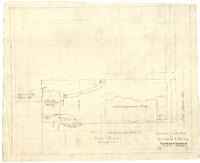 Sholes/Palmer House Lot Blueprint Blueprint of the lot of the Charles Palmer-and presumably C.L. Sholes-house and apartment on Division Street by Eschweiler and Eschweiler Architects from Wisconsin Architectural Archives/Milwaukee Public Library
Sholes/Palmer House Lot Blueprint Blueprint of the lot of the Charles Palmer-and presumably C.L. Sholes-house and apartment on Division Street by Eschweiler and Eschweiler Architects from Wisconsin Architectural Archives/Milwaukee Public Library -
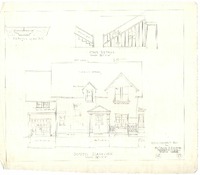 Sholes/Palmer House Front Elevation Blueprint Blueprint of the front elevation of the Charles Palmer-and presumably C.L. Sholes-house on Division Street by Eschweiler and Eschweiler Architects from Wisconsin Architectural Archives/Milwaukee Public Library
Sholes/Palmer House Front Elevation Blueprint Blueprint of the front elevation of the Charles Palmer-and presumably C.L. Sholes-house on Division Street by Eschweiler and Eschweiler Architects from Wisconsin Architectural Archives/Milwaukee Public Library -
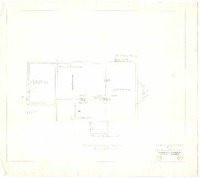 Sholes/Palmer House Addition Blueprint Blueprint of the original foundation and the planned addition of the Charles Palmer house on Division Street by Eschweiler and Eschweiler Architects from Wisconsin Architectural Archives/Milwaukee Public Library. Christopher Latham Sholes lived at this location from 1863 to 1867.
Sholes/Palmer House Addition Blueprint Blueprint of the original foundation and the planned addition of the Charles Palmer house on Division Street by Eschweiler and Eschweiler Architects from Wisconsin Architectural Archives/Milwaukee Public Library. Christopher Latham Sholes lived at this location from 1863 to 1867. -
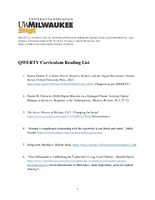 QWERTY Curriculum Reading List Reading Resources on QWERTY and Technology
QWERTY Curriculum Reading List Reading Resources on QWERTY and Technology -
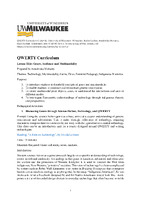 QWERTY Curriculum Lesson Plan: Genre and Multimodality This is a lesson plan on Genre and Multimodality. It's one of several plans in the QWERTY Curriculum designed to be used in English 102, part of the first-year college writing program at the University of Wisconsin-Milwaukee.
QWERTY Curriculum Lesson Plan: Genre and Multimodality This is a lesson plan on Genre and Multimodality. It's one of several plans in the QWERTY Curriculum designed to be used in English 102, part of the first-year college writing program at the University of Wisconsin-Milwaukee. -
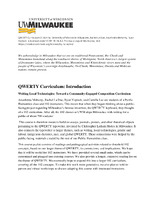 QWERTY Curriculum: Introduction This is the introduction to the QWERTY Curriculum designed to be used in English 102, part of the first-year college writing program at the University of Wisconsin-Milwaukee.
QWERTY Curriculum: Introduction This is the introduction to the QWERTY Curriculum designed to be used in English 102, part of the first-year college writing program at the University of Wisconsin-Milwaukee. -
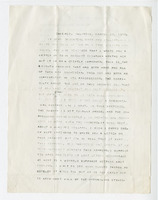 Letter, Sherman Booth to Mary and Lillian Booth, Chicago, IL, 1870 This extraordinary letter was written in 1870 by the abolitionist Sherman Booth (1812-1904). Booth moved to Milwaukee in 1848 as the editor of the Milwaukee Freeman, an abolitionist newspaper. In 1867 Booth moved to Chicago with his third wife, Augusta Smith, who he refers to in the letter. While there, James Densmore--the main financial backer of the early typewriter enterprise--appears to have delivered an early typewriter prototype to Booth, on which he wrote this letter, four years before the final version of the typewriter went on sale to the public. There is a telling typo near the end of the letter that helps us understand what sort of machine Booth was using. Early prototypes had piano keyboards, with the letters A-M from left to right on the black keys, and the letters N-Z right to left on the white keys. When Booth mis-spells "wife" as "whfe," he makes an error that would be unlikely on a QWERTY keyboard, where H and I are on different rows and separated by one key. But on the early prototypes with piano keyboards, H and I would have been on adjacent black keys, and so much easier to mistake. The link below shows the surviving keyboard of an early prototype held by the Milwaukee Public Museum, which likely resembles the one that Booth would have used. Only its keyboard and lower frame survive; the mechanism for imprinting letters was removed and perhaps repurposed for subsequent prototypes. Booth also notes that he had written a similar letter on an even earlier prototype eighteen months earlier, which would have been on a very early prototype. This letter is lost, but could tell us a great deal about the capabilities of the earliest prototypes. How Booth and Densmore came to know each other at this period is not known, but Densmore spent the late 1860s and early 1870s putting machines in the hands of many testers, so he may have sought out Booth as journalist and editor likely to be interested in new writing techniques.
Letter, Sherman Booth to Mary and Lillian Booth, Chicago, IL, 1870 This extraordinary letter was written in 1870 by the abolitionist Sherman Booth (1812-1904). Booth moved to Milwaukee in 1848 as the editor of the Milwaukee Freeman, an abolitionist newspaper. In 1867 Booth moved to Chicago with his third wife, Augusta Smith, who he refers to in the letter. While there, James Densmore--the main financial backer of the early typewriter enterprise--appears to have delivered an early typewriter prototype to Booth, on which he wrote this letter, four years before the final version of the typewriter went on sale to the public. There is a telling typo near the end of the letter that helps us understand what sort of machine Booth was using. Early prototypes had piano keyboards, with the letters A-M from left to right on the black keys, and the letters N-Z right to left on the white keys. When Booth mis-spells "wife" as "whfe," he makes an error that would be unlikely on a QWERTY keyboard, where H and I are on different rows and separated by one key. But on the early prototypes with piano keyboards, H and I would have been on adjacent black keys, and so much easier to mistake. The link below shows the surviving keyboard of an early prototype held by the Milwaukee Public Museum, which likely resembles the one that Booth would have used. Only its keyboard and lower frame survive; the mechanism for imprinting letters was removed and perhaps repurposed for subsequent prototypes. Booth also notes that he had written a similar letter on an even earlier prototype eighteen months earlier, which would have been on a very early prototype. This letter is lost, but could tell us a great deal about the capabilities of the earliest prototypes. How Booth and Densmore came to know each other at this period is not known, but Densmore spent the late 1860s and early 1870s putting machines in the hands of many testers, so he may have sought out Booth as journalist and editor likely to be interested in new writing techniques.
